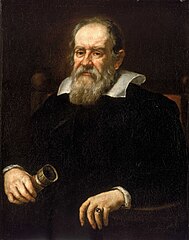CALL it the Higgs boson effect, the Big Bang Theory effect or even the Brian Cox effect, if you must. There’s no getting away from it – after years in the doldrums, physics is cool.
Lisa Raffensperger
Link
New Scientist Article by Lisa Raffensperger
CALL it the Higgs boson effect, the Big Bang Theory effect or even the Brian Cox effect, if you must. There’s no getting away from it – after years in the doldrums, physics is cool.
Lisa Raffensperger
Link
New Scientist Article by Lisa Raffensperger

Joseph Keller (US), Raymond Goldstein (US/UK), Patrick Warren and Robin Ball (UK) have been awarded the 2012 Ig Nobel prize for physics for calculating the balance of forces that shape and move the hair in a human ponytail [1,2].
The winners were announced and awarded on Thursday 20th September.
Anyone interested should examine the Ponytail Equation.
References
[1] Raymond E. Goldstein, Patrick B. Warren, and Robin C. Ball, “Shape of a Ponytail and the Statistical Physics of Hair Fiber Bundles.” Physical Review Letters, vol. 198, no. 7, 2012.
[2] Joseph B. Keller, “Ponytail Motion,”, Journal of Applied Mathematics, vol. 70, no. 7, 2010, pp. 2667–72.
Links

Galileo Galilei was an Italian physicist, mathematician, astronomer, and philosopher who shaped modern scientific thinking. Galileo has been called the “the Father of Modern Science”.
Galileo’s wider “claim to fame” was his persecution at the hands of the then very powerful and politically influential Catholic Church. (We seem to get reminded of this quite a lot be disgruntled “amateurs”. )
An educational film dramatising the life of Galileo and his scientific discoveries can be found on the IOP website here.
The chapters are as follows
2:15 – Scene 1: Of Mice and Pendulums. Pisa Cathedral, Italy, 1583
7:50 – Scene 2: The Feather and the Weights. The Leaning Tower of Pisa, 1590
14:55 – Scene 3: The Spyglass. Optician’s Shop, Holland, 1608
21:15 – Scene 4: Galileo’s Star Party. Galileo’s Garden, Padua, Italy. 1609
36:10 – Scene 5: A Visit From the Pope. Galileo’s Garden, Florence, Italy, 1633
51:00 – Epilogue: The Space Probes. A student’s room, Lancaster University, 2009
A team of researchers at Cambridge used liquid crystals in place of standard printer ink to print tiny dots on a surface covered with a special coating [1]. When the coating dried, the dots on the surface become lasers.
This is the first time that anyone has been able to print lasers and opens up a host of potential applications. Including various displays, lighting effects and motion sensors.
Image courtesy of the University of Cambridge.
Lasers
A laser is a device that emits light of a high degree of spatial and temporal coherence (i.e. “very uniform”) via a process of optical amplification based on the stimulated emission. This process was predicted by Einstein and is a direct consequence of quantum mechanics. Laser is an acronym for “light amplification by stimulated emission of radiation”.
Stimulated Emission
One of the important consequences of quantum mechanics is that electrons surrounding an atom of molecule can only sit in specified discrete energy levels. Electrons can jump up to excited states (if they are free) by the absorption of a photon. Similarly, an electron in an excited state can fall back into a lower energy state by the emission of photon. Note that such transitions are necessarily between the discrete energy levels. This leads to the phenomena of spectral lines.

An electron in an excited state will not sit there forever. An electron in an excited state will decay to a lower energy state, which is not occupied by another electron, after some time which characterises that particular transition. This is known as “spontaneous emission”. The phase associated with the photon that is emitted is random and the radiation is emitted in all directions. For example, florescence and thermal emission are of this kind.
An external photon with the energy associated with a transition can affect the quantum mechanical state of electrons. In particular the probability of the electron making a transition is greatly increased. The rate of transitions between two states is can be much greater than that due to spontaneous emission. A transition from a higher to a lower energy state, produces two photon; this is the process of “stimulated emission”.
The key point is that the photons generated by stimulated emission is almost the same as the input photons in terms of wavelength, phase, and polarisation. This gives laser light its rather uniform properties, including direction of emission.
References
[1] D. J. Gardiner , W.-K. Hsiao , S. M. Morris , P. J. W. Hands , T. D. Wilkinson , I. M. Hutchings and H. J. Coles. Printed photonic arrays from self-organized chiral nematic liquid crystals. Soft Matter, 2012, Advance Article DOI: 10.1039/C2SM26479J
The mere formulation of a problem is far more essential than its solution, which may be merely a matter of mathematical or experimental skills. To raise new questions, new possibilities, to regard old problems from a new angle requires creative imagination and marks real advances in science.

I strongly agree with this. Quite often a problem is not important in itself, but rather the tools developed in its solution are pivotal to science.
Mathematics
Great mathematical examples here are lemmas that go on to be more important than their original application.
One great example that springs to mind is the Poincaré lemma: “All closed differential k-forms (k > 0) are locally exact”.
Plenty of other examples exist. The point is, although initially the lemmas seem very technical and narrow, they turn out to be of independent interest and very powerful in unexpected ways.
Particle physics and space science
Possibly a better example is that of spin-off technologies from particle physics and space exploration. For example experimental particle physics has brought us, sterilisation methods, non-destructive testing, cancer treatments, medical imaging techniques and so on.
Wider society and culture
Something that should not be overlooked is the impact of science and mathematics on culture. Advances in mathematics and science can change our outlook on the Universe and shape what we are. To quote Robert R. Wilson, who was the first director of Fermilab, when asked to justify the cost of the experiments to the Congressional Joint Committee on Atomic Energy, said
It has only to do with the respect with which we regard one another, the dignity of men, our love of culture. It has to do with: Are we good painters, good sculptors, great poets? I mean all the things we really venerate in our country and are patriotic about. It has nothing to do directly with defending our country except to make it worth defending.
A new study published today (Friday 14 September) in Environmental Research Letters, compares the latest seasonal forecast system to the one previously used [1]. The conclusion is that the latest models can better warn the UK of extreme winter weather conditions.
The winter of 2009–2010 was known as “The Big Freeze” here in the UK and was part of the severe winter weather in Europe. It was the coldest winter since 1978-79, with a mean temperature of 1.5 °C.

Picture of the UK taken on the 7th January 2010.
The new model takes into account sudden stratospheric warmings (SSWs), which are known to be responsible for cold surface conditions. SSWs happen when the polar vortex of westerly (eastward) winds in the winter hemisphere suddenly slows down or even reverses direction, accompanied by a rise of stratospheric temperature by several tens of kelvins.
References
[1] D R Fereday, A Maidens, A Arribas, A A Scaife and J R Knight. Seasonal forecasts of northern hemisphere winter 2009/10. (2012) Environ. Res. Lett. 7 034031
Links
A team at IBM in Zurich have used a variant of a technique called atomic force microscopy to produce single-molecule images [1]. These are so detailed that the type of atomic bonds can be seen.
Here are some of those pictures. They belong to IBM and can be found on the BBC website.

The bonds at centre are shorter than those at the edges, as they involve more electrons.

The same team imaged olympicene.
References
[1] Gross et al. Bond-Order Discrimination by Atomic Force Microscopy. Science 14 September 2012:
Vol. 337 no. 6100 pp. 1326-1329
 |
Werner Heisenberg, one of the founding fathers of quantum mechanics is famous for his uncertainty principle. Initially he came to his result based on a rather heuristic argument that measurement of a system disturbs the system and this leads to an inherent uncertainty in all measurements. We have the “Heisenberg’s microscope” in which he imagines an experimenter trying to measure the position and momentum of an electron by shooting a photon at it. |
Later on the uncertainly principle was formulated correctly in terms of quantum operators that do not commute. This is of course the true deep reason why we have quantum uncertainty.
It has now been shown that Heisenberg’s original argument is wrong. Aephraim Steinberg and other researchers the Centre for Quantum Information & Quantum Control and Institute for Optical Sciences at the University of Toronto have published work disproving Heisenberg [1].
I will stress the claim is not that the uncertainty principle is wrong, it is not, the claim is that Heisenberg’s original argument is wrong.
References
[1] Lee A. Rozema, Ardavan Darabi, Dylan H. Mahler, Alex Hayat, Yasaman Soudagar, and Aephraim M. Steinberg. Violation of Heisenberg’s Measurement-Disturbance Relationship by Weak Measurements. Phys. Rev. Lett. 109, 100404 (2012)
“While there is no magic bullet to remedy the chronic shortage of physics teachers, the situation is starting to improve as steps have been taken by both the IOP and the Department for Education.”
Read the summary here (links to a PDF)

“The UK science budget is about £5.5bn each year… on a government spend of over 600 billion. That’s for everything – medical research, Cern, engineering, arts and humanities; the whole thing. It’s below most global averages, the OECD’s for example,”
Prof. Brian Cox, University of Manchester
Prof. Brian Cox was speaking at the British Science Festival in Aberdeen. The Manchester University researcher was speaking before his guest lecture at the festival.
He also pointed out that public engagement with science was vital to the future sustainability and growth of British science.
Links